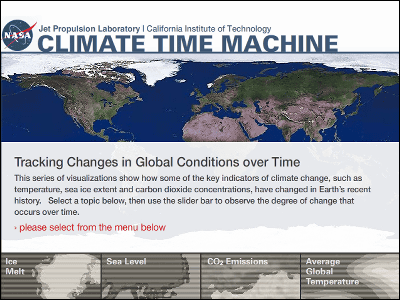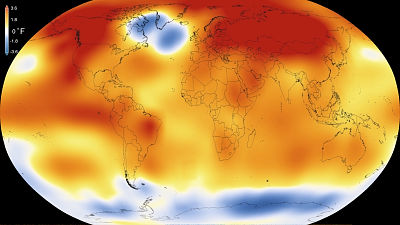A movie that shows the trend of the average temperature of the earth from the start of observation to 2017

According to NASA, the average temperature in 2017 rose by 0.9 ° C than the average in the 30 years from 1951 to 1980, it was the second highest value in observation history. Especially after 1970Global warmingThe average temperature seems to be rising dramatically under the influence of. When you look at the movie published by NASA, you can see the transition of the average temperature from 1880 to 2017 when the observation started.
Long-Term Warming Trend Continued in 2017: NASA, NOAA | NASA
https://www.nasa.gov/press-release/long-term-warming-trend-continued-in-2017-nasa-noaa
2017 Takes Second Place for Hottest Year
This is the average temperature in the 5 years from the start of observation in 1880 to 1884. Compared to the average temperature in the 30 years from 1951 to 1980, the place where the average temperature was recorded above + 2 ° C is represented by red color, the color is orange, yellow, white (no change), light blue, blue, It is shown in dark blue (-2 ℃ or less). At the beginning of the observation we can see that the temperature was low overall.

In the latter half of the 1910s, the yellow part is decreasing and the temperature is falling.

But in the 1920s when the American economy booms, the white part gradually increases, and you can see that the temperature starts to rise.

The temperature in the Northern Hemisphere is shown in yellow to orange in the late 1930s when the Sino-Japanese War and World War II start.

In the 1950s when nuclear tests became popular, the temperatures around the United States and the Arctic and Antarctic will show higher values.

In the latter half of the 1960's where the interest in space development had increased, the temperature of the whole earth rises and more parts are shown in white.

In the latter half of the 1970s when it begins to be affected by global warming, it will be showing higher overall temperature.

In the latter half of the 1980s, which is the bubble period of Japan, in 1990, the temperature in Europe, which kept low values for a long time, has also risen.

In the 2000s the temperature in the northern hemisphere markedly increased ... ...

In the 5 years from 2013 to 2017, the area shown in red primarily in the Arctic Circle and showing less than average average temperature compared to the 30 years from 1951 to 1980 has almost disappeared.

Related Posts:







